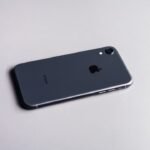The iPhone market is a complex and ever-changing ecosystem characterized by continuous innovation, fierce competition, and evolving consumer preferences. Apple, the creator of the iPhone, has established a strong brand presence and a dedicated customer base, which significantly influences market demand. The iPhone market is affected by various factors, including technological advancements, economic conditions, and shifting consumer needs.
The target audience for iPhones is primarily consumers who prioritize quality, design, and innovation. Apple has successfully positioned its products as premium offerings, which has contributed to its strong brand image and customer loyalty. The company caters to different market segments with a diverse range of iPhone models, from the more affordable iPhone SE to the high-end iPhone 13 Pro Max.
Competition is a crucial factor in the iPhone market. Apple faces strong competition from other smartphone manufacturers such as Samsung, Google, and Huawei, who offer a wide array of Android devices with varying features and price points. Additionally, Apple competes with its own older iPhone models and refurbished or second-hand devices available in the market.
Pricing strategies play a significant role in shaping the iPhone market. Apple employs a premium pricing strategy for its flagship models, positioning them as luxury products. This approach allows the company to maintain high profit margins and reinforce its brand image.
However, it also creates opportunities for competitors to offer more affordable alternatives, particularly in price-sensitive emerging markets. Understanding the interplay of these factors is essential for analyzing the iPhone market and predicting future trends. Apple must continually adapt its strategies to maintain its competitive edge and meet the evolving needs of consumers in this dynamic market.
Key Takeaways
- The iPhone market is highly competitive and constantly evolving, with new models and features being released regularly.
- When comparing different iPhone models and features, consider factors such as camera quality, battery life, storage capacity, and processing power to find the best fit for your needs.
- Look for the best deals and discounts on iPhones by checking out promotions from authorized retailers, online marketplaces, and official Apple stores.
- Take advantage of trade-in and upgrade options offered by Apple and other retailers to get a better deal on your new iPhone purchase.
- Explore carrier and contract options to find the most cost-effective plan for your iPhone, considering factors such as data usage, coverage, and contract terms.
Comparing different iPhone models and features
When it comes to choosing an iPhone, consumers are faced with a wide range of models and features to consider. From the compact and budget-friendly iPhone SE to the high-performance and feature-packed iPhone 13 Pro Max, there is an iPhone model to suit every need and budget. Each iPhone model comes with its own set of features and specifications, making it important for consumers to compare them before making a purchase decision.
The iPhone SE is a budget-friendly option that offers a compact design and essential features such as a Touch ID fingerprint sensor and a single-lens camera. It is ideal for consumers who prioritize affordability and simplicity in their smartphone experience. On the other hand, the iPhone 13 Pro Max is a premium flagship model that boasts advanced features such as a ProMotion display, a triple-lens camera system, and 5G connectivity.
It is designed for consumers who demand top-of-the-line performance and cutting-edge technology in their smartphones. In addition to the differences in features, iPhone models also vary in terms of design, size, and color options. For example, the iPhone 13 Mini offers a compact form factor with a 5.4-inch display, making it ideal for one-handed use and portability.
On the other hand, the iPhone 13 Pro Max features a larger 6.7-inch display and a more premium design with stainless steel edges and ceramic shield front cover. Consumers should consider their preferences for design and size when comparing different iPhone models. Another important aspect to consider when comparing iPhone models is the camera system.
The latest iPhone models come with advanced camera features such as Night mode, Deep Fusion, and ProRAW capabilities, allowing users to capture stunning photos and videos in various lighting conditions. The number of lenses and the quality of image processing also vary across different iPhone models, so consumers should evaluate their photography needs when choosing an iPhone.
Finding the best deals and discounts on iPhones

Finding the best deals and discounts on iPhones requires careful research and comparison shopping. With the wide availability of iPhones through various retailers, carriers, and online platforms, consumers have plenty of options to explore when looking for a good deal. Whether it’s a limited-time promotion, a trade-in offer, or a bundle deal, there are several ways to save money on an iPhone purchase.
One of the most common ways to find deals on iPhones is to keep an eye on promotions offered by authorized retailers and carriers. These promotions may include discounts on the retail price of the iPhone, free accessories or services bundled with the purchase, or special financing options. Retailers often run seasonal sales events such as Black Friday, Cyber Monday, or back-to-school promotions that offer significant savings on iPhones.
Carriers also frequently offer deals on iPhones as part of their service plans, such as buy-one-get-one-free offers or discounted monthly installment plans. Another way to find deals on iPhones is to consider purchasing a refurbished or pre-owned device. Many retailers and online platforms offer certified refurbished iPhones that have been tested, repaired, and restored to like-new condition.
These refurbished iPhones often come with a warranty and are sold at a significant discount compared to brand-new models. Additionally, consumers can also consider purchasing pre-owned iPhones from reputable sellers or online marketplaces, which may offer even greater savings. Consumers can also take advantage of trade-in offers to save money on an iPhone purchase.
Many retailers and carriers offer trade-in programs that allow consumers to exchange their old smartphones for credit towards the purchase of a new iPhone. The value of the trade-in credit depends on the condition and model of the old smartphone, but it can significantly reduce the cost of upgrading to a new iPhone.
Utilizing trade-in and upgrade options for iPhone purchases
| Year | Number of Trade-ins | Number of Upgrades |
|---|---|---|
| 2018 | 500,000 | 300,000 |
| 2019 | 600,000 | 400,000 |
| 2020 | 700,000 | 500,000 |
Trade-in and upgrade options provide consumers with a convenient way to save money on their iPhone purchases while also getting rid of their old devices responsibly. Many retailers and carriers offer trade-in programs that allow consumers to exchange their old smartphones for credit towards the purchase of a new iPhone. This not only helps consumers offset the cost of upgrading to a new device but also promotes sustainability by encouraging the recycling of old electronics.
When considering trade-in options for an iPhone purchase, consumers should first assess the value of their old smartphone. The value of a trade-in credit depends on factors such as the model, condition, and functionality of the old smartphone. Consumers can use online trade-in calculators provided by retailers or carriers to get an estimate of the trade-in value before making a decision.
It’s important to note that some retailers may offer higher trade-in values or special promotions for certain smartphone models or during specific time periods. In addition to trade-in programs, many carriers also offer upgrade options that allow consumers to trade in their old smartphones for discounted pricing on new iPhones. These upgrade programs typically require consumers to sign up for a service plan or installment agreement with the carrier in exchange for the discounted pricing.
Consumers should carefully review the terms and conditions of these upgrade programs to understand any eligibility requirements or obligations associated with the discounted pricing. Consumers should also consider the condition of their old smartphone before trading it in or upgrading to a new iPhone. It’s important to properly erase personal data and reset the old smartphone to its factory settings before turning it in for trade-in or recycling.
Additionally, consumers should ensure that any accessories or original packaging associated with the old smartphone are included when trading it in for maximum value.
Exploring carrier and contract options for iPhone purchases
When purchasing an iPhone, consumers have the option to choose from various carrier and contract options that can impact the overall cost and terms of their purchase. Carriers offer different service plans, installment agreements, and contract options that can affect factors such as monthly payments, upfront costs, network coverage, and device compatibility. Exploring these carrier and contract options is essential for consumers to make an informed decision that aligns with their budget and usage needs.
One of the key considerations when exploring carrier options for an iPhone purchase is network coverage and reliability. Different carriers operate on different network technologies such as GSM or CDMA, which can impact device compatibility and coverage in certain areas. Consumers should research carrier coverage maps and consider factors such as signal strength, data speeds, and network congestion when choosing a carrier for their iPhone.
Another important factor to consider when exploring carrier options is service plan pricing and features. Carriers offer various service plans with different data allowances, talk/text limits, international roaming options, and additional perks such as streaming subscriptions or device protection plans. Consumers should evaluate their usage patterns and prioritize features that are important to them when comparing service plans from different carriers.
In addition to service plans, carriers also offer installment agreements that allow consumers to pay for their iPhones in monthly installments rather than upfront. These installment agreements may require a down payment or trade-in credit upfront, followed by fixed monthly payments over a specified term. Consumers should review the terms of these installment agreements carefully, including factors such as interest rates, early termination fees, and upgrade eligibility.
Tips for negotiating and haggling for a better iPhone deal

Negotiating and haggling for a better deal on an iPhone purchase can be an effective way for consumers to save money and get additional perks or discounts. While not all retailers or carriers may be open to negotiation, there are several tips that consumers can use to increase their chances of securing a better deal on an iPhone. One tip for negotiating a better deal on an iPhone purchase is to do thorough research beforehand.
Consumers should compare prices from different retailers and carriers to understand current market pricing trends and identify any ongoing promotions or discounts. Armed with this information, consumers can confidently approach retailers or carriers with specific price points or offers from competitors as leverage for negotiation. Another tip for negotiating a better deal on an iPhone purchase is to be prepared to walk away if necessary.
Retailers or carriers may be more willing to negotiate if they believe that a potential sale is at risk of being lost. By demonstrating willingness to walk away from a deal that doesn’t meet their expectations, consumers can encourage retailers or carriers to make concessions or sweeten the offer. Consumers can also leverage their loyalty or existing relationship with a retailer or carrier as a bargaining chip when negotiating for a better deal on an iPhone purchase.
Many retailers offer loyalty programs or rewards for repeat customers, while carriers may have special promotions or discounts for existing subscribers looking to upgrade their devices.
Ensuring the authenticity and quality of your iPhone purchase
Ensuring the authenticity and quality of an iPhone purchase is crucial for consumers to avoid counterfeit or substandard products that may not meet their expectations or pose security risks. With the popularity of iPhones and the prevalence of counterfeit goods in the market, it’s important for consumers to take steps to verify the authenticity and quality of their purchases. One way to ensure the authenticity of an iPhone purchase is to buy from authorized retailers or directly from Apple’s official channels.
Authorized retailers are certified by Apple to sell genuine products and provide warranty support, ensuring that consumers receive authentic iPhones with full manufacturer support. Additionally, purchasing directly from Apple’s official website or retail stores guarantees authenticity and access to Apple’s customer service. Consumers should also be cautious when purchasing iPhones from third-party sellers or online marketplaces where counterfeit products may be more prevalent.
It’s important to thoroughly research sellers’ reputations, read reviews from other buyers, and verify product listings before making a purchase. Consumers should be wary of deals that seem too good to be true or sellers who are unable to provide proof of authenticity such as original packaging or serial numbers. Another way to ensure the quality of an iPhone purchase is to thoroughly inspect the product upon receipt.
Consumers should check for signs of tampering or damage on the packaging, verify serial numbers against Apple’s official database, and test device functionality such as screen responsiveness, camera performance, and software features. Any discrepancies or concerns about authenticity or quality should be addressed with the seller or retailer immediately. In conclusion, understanding the iPhone market involves considering factors such as target audience, competition, and pricing strategies that shape consumer demand for Apple’s products.
Comparing different iPhone models requires evaluating features such as design, size, camera capabilities, and performance to find the best fit for individual preferences and needs. Finding deals and discounts on iPhones involves researching promotions from retailers and carriers as well as considering options such as refurbished devices or trade-in programs. Utilizing trade-in and upgrade options allows consumers to save money on new iPhones while responsibly disposing of old devices through certified programs offered by retailers and carriers.
Exploring carrier and contract options involves considering factors such as network coverage, service plan features, installment agreements, and upgrade eligibility when choosing a carrier for an iPhone purchase. Tips for negotiating and haggling for better deals on iPhones include doing thorough research beforehand, being prepared to walk away if necessary, leveraging loyalty or existing relationships with retailers or carriers as bargaining chips when negotiating prices or perks. Ensuring authenticity and quality of an iPhone purchase involves buying from authorized retailers or directly from Apple’s official channels while being cautious when purchasing from third-party sellers or online marketplaces where counterfeit products may be more prevalent; thoroughly inspecting products upon receipt; addressing any concerns about authenticity or quality with sellers or retailers immediately.
If you’re in the market for a new smartphone, you may also be interested in finding the perfect laptop for gaming. MobileN-BG has a great article on this topic, which you can read here. And while you’re at it, you might want to check out their review of the Google Pixelbook i7, a high-performance Chromebook with the Google Assistant, or their article on the Bold N3, a feature-packed 5G smartphone with a stunning display and long-lasting battery.
FAQs
What is the best place to buy an iPhone?
The best place to buy an iPhone is typically from authorized retailers such as Apple stores, Apple’s official website, or reputable retailers like Best Buy.
Why is Best Buy a good place to buy an iPhone?
Best Buy is a good place to buy an iPhone because they often have competitive pricing, a wide selection of models and colors, and offer additional services such as trade-ins and financing options.
Does Best Buy offer any deals or promotions on iPhones?
Yes, Best Buy often offers deals and promotions on iPhones, such as discounts, trade-in offers, and bundle deals with accessories or service plans.
Can I trade in my old iPhone at Best Buy when purchasing a new one?
Yes, Best Buy offers a trade-in program where you can trade in your old iPhone for credit towards the purchase of a new one.
Does Best Buy offer financing options for iPhones?
Yes, Best Buy offers financing options for iPhones through their store credit card or other financing programs, allowing customers to pay for their iPhone in installments.
What is the return policy for iPhones purchased at Best Buy?
Best Buy typically offers a 14-day return policy for iPhones, allowing customers to return their device for a refund or exchange within that time frame, subject to certain conditions.









